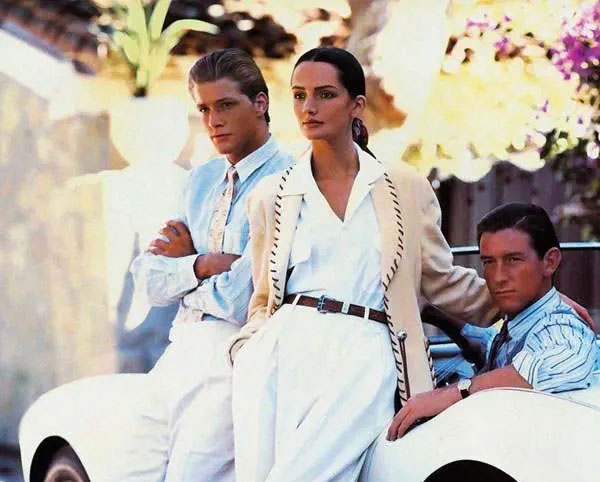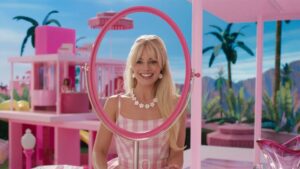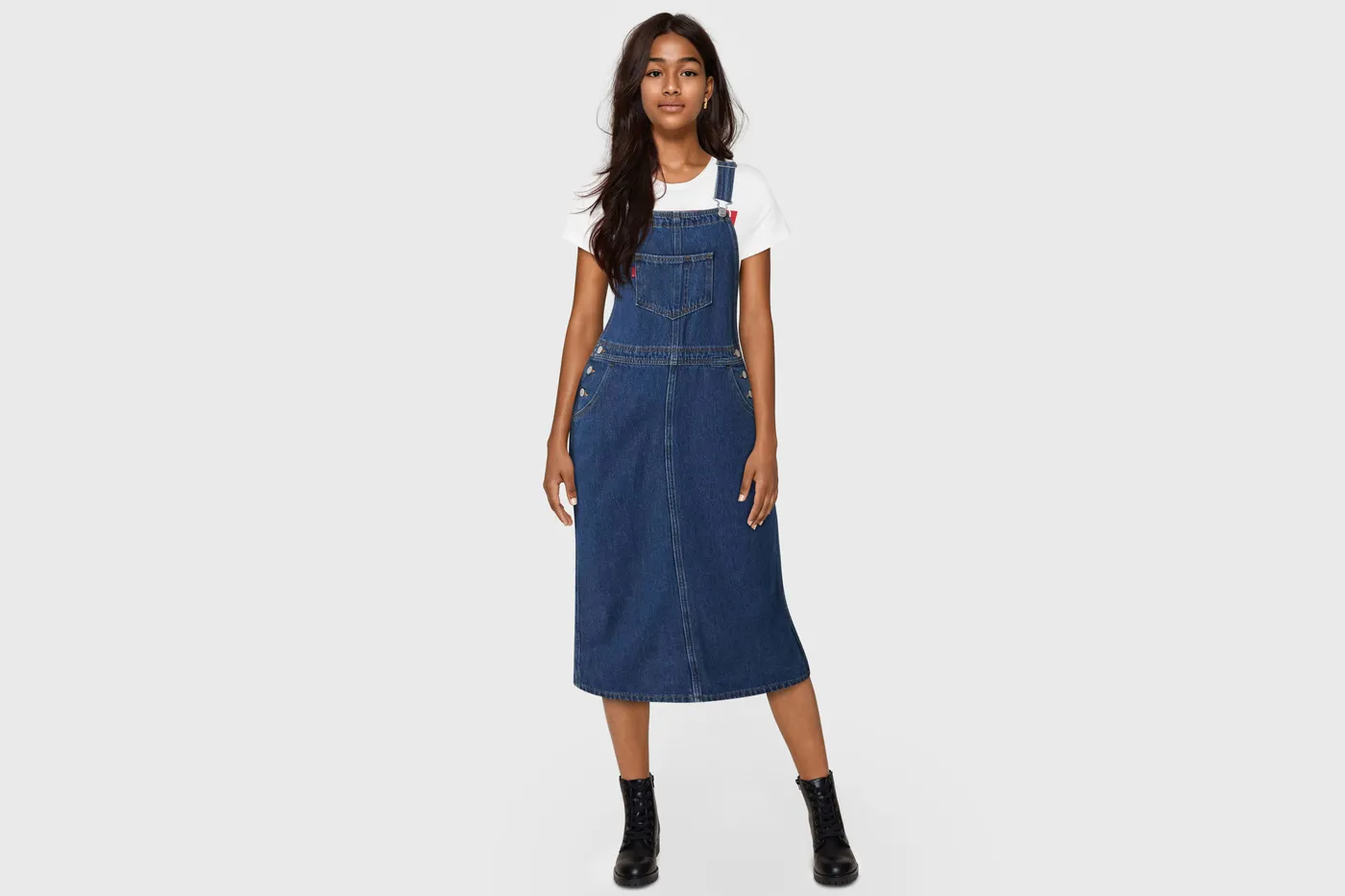The “Old Money aesthetic” is just one of the many fashion trends that coexist in the current scene. It is a way of dressing that evokes an opulent and traditional lifestyle, but in 2022 it has undergone a reinterpretation that infuses it with a fresh touch of minimalism and an elegant vibe.
This aesthetic, known as “Old money”, is based on the concept of a “rich and classic” lifestyle that was historically associated with people who inherited wealth. In the United States, it is linked to WASP (Protestant, Anglo-Saxon, White) culture, while in Europe it is linked to titles of nobility, suggesting that it goes beyond fashion and can be considered an ideology.
A prominent manifestation of this style is the “Preppy style” or “Ivy Style”, which refers to clothing with a sophisticated collegiate-looking aesthetic and which has become the iconic image of “Old money”. This style is not exactly new, as it originated in the early 20th century, inspired by the distinctive appearance that elite groups that attended exclusive high schools and private universities in the United States and England used to sport.
Wealthy students adopted fashion as a way to challenge norms of uniformity, combining clothing such as sweatshirts, blazers, bomber jackets, jeans, and white socks with loafers. They often mixed sporting informality with formality, always highlighting their social status of wealth, privilege, sophistication and, above all, exclusivity.
Other notable pieces in the “Old money” aesthetic include structured jerseys and blazers with crests and initials of academic institutions or fraternities, vests with argyle prints, Polo shirts, varsity jerseys, and pleated skirts. All of these garments reflect a classic and traditional essence.
How does a true representative of “Old money” dress? They usually opt for neutral colors that reflect their constant search for neatness and a minimalist style. In addition, they usually enjoy activities such as sailing trips, summers in Europe and studies at prestigious universities. Visually, they could be compared to vintage Ralph Lauren ad models. Although this may seem utopian, there are people who embody this aesthetic, with surnames like Kennedy, Kelly, Vanderbilt, Rockefeller, Hilton or Hearst.
In today’s fashion, “Old money” represents a response to the “California rich” style, which is associated with excess, ostentation, flashy logos and sports cars. This contrasts with the preferred trend of “Old money”, which is based on refined and discreet but evident elegance, often called “quiet luxury”.
It is important to note that some critics claim that the popularity of “Old money” can carry racist, classist and xenophobic influences, which could question the values of those who adopt this aesthetic. However, in terms of fashion, “Old money” is simply an aesthetic trend, like “grunge” or “normcore”, which is adopted one day and discarded the next. Therefore, we should not demonize the way people choose to dress, since not everyone does so with negative intentions, unlike those who judge them.
******
El “Old Money aesthetic” es solo una de las muchas tendencias de moda que coexisten en el panorama actual. Se trata de una forma de vestir que evoca un estilo de vida opulento y tradicional, pero que en 2022 ha experimentado una re interpretación que le infunde un toque fresco de minimalismo y una vibra elegante.
Esta estética, conocida como “Old money”, se basa en el concepto de un estilo de vida “rico y clásico” que históricamente se asociaba con personas herederas de la riqueza. En Estados Unidos, se vincula a la cultura WASP (Protestante, Anglosajón, Blanco), mientras que en Europa se relaciona con los títulos de nobleza, lo que sugiere que va más allá de la moda y puede considerarse una ideología.
Una manifestación destacada de este estilo es el “Preppy style” o “Ivy Style”, que se refiere a la ropa con una estética sofisticada de aspecto colegial y que se ha convertido en la imagen icónica del “Old money”. Este estilo no es precisamente novedoso, ya que se originó a principios del siglo XX, inspirado en la apariencia distintiva que solían lucir los grupos de élite que asistían a exclusivas preparatorias y universidades privadas en Estados Unidos e Inglaterra.
Los estudiantes acaudalados adoptaron la moda como una forma de desafiar las normas de uniformidad, combinando prendas como sudaderas, americanas, bomber jackets, jeans y calcetines blancos con mocasines. A menudo, mezclaban la informalidad deportiva con la formalidad, siempre destacando su estatus social de riqueza, privilegio, sofisticación y, sobre todo, exclusividad.
Otras prendas notables en la estética “Old money” incluyen jerseys y blazers estructurados con escudos e iniciales de instituciones académicas o fraternidades, chalecos con estampados de rombos, camisetas tipo Polo, jerseys varsity y faldas tableadas. Todas estas prendas reflejan una esencia clásica y tradicional.
¿Cómo se viste un auténtico representante del “Old money”? Suelen optar por colores neutros que reflejan su búsqueda constante de pulcritud y un estilo minimalista. Además, suelen disfrutar de actividades como paseos en velero, veranos en Europa y estudios en prestigiosas universidades. Visualmente, podrían compararse con los modelos de anuncios vintage de Ralph Lauren. Aunque esto pueda parecer utópico, existen personas que personifican esta estética, con apellidos como Kennedy, Kelly, Vanderbilt, Rockefeller, Hilton o Hearst.
En la moda actual, el “Old money” representa una respuesta al estilo “California rich”, que se asocia con el exceso, la ostentación, los logotipos llamativos y los automóviles deportivos. Esto contrasta con la tendencia preferida del “Old money”, que se basa en la elegancia refinada y discreta, pero evidente, a menudo denominada “lujo silencioso”.
Es importante destacar que algunos críticos afirman que la popularidad del “Old money” puede conllevar influencias racistas, clasistas y xenofóbicas, lo que podría cuestionar los valores de quienes adoptan esta estética. Sin embargo, en términos de moda, el “Old money” es simplemente una tendencia estética, al igual que el “grunge” o el “normcore”, que un día se adopta y al siguiente se descarta. Por lo tanto, no debemos demonizar la forma en que las personas eligen vestir, ya que no todos lo hacen con intenciones negativas, a diferencia de quienes los juzgan.



